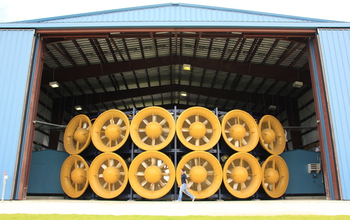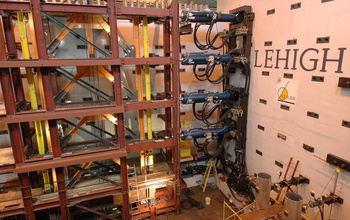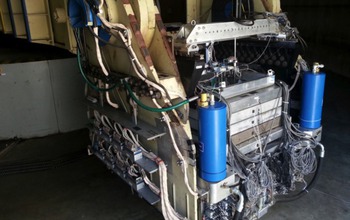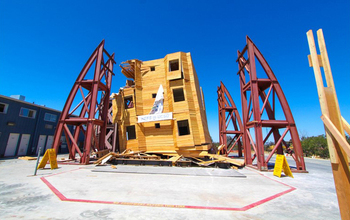All Images
News Release 15-116
NSF invests $40 million in research infrastructure for earthquake, wind and water hazards
Experimental facilities and cyberinfrastructure will offer opportunities for natural hazards research to bolster community resilience
This material is available primarily for archival purposes. Telephone numbers or other contact information may be out of date; please see current contact information at media contacts.

The 12-fan Wall of Wind at Florida International University, one of the experimental facilities in NSF's Natural Hazards Engineering Research Infrastructure, will enable better engineering against tornadoes, hurricanes and other windstorms.
Credit: Courtesy of FIU
Download the high-resolution JPG version of the image. (6.2 MB)
Use your mouse to right-click (Mac users may need to Ctrl-click) the link above and choose the option that will save the file or target to your computer.

At Lehigh University, the NSF Natural Hazards Engineering Research Infrastructure facility enables earthquake engineers to perform hybrid simulation, which combines computer modeling and physical testing.
Here, an experimental substructure for a hybrid simulation of a self-centering, concentrically-braced steel frame is subjected to the maximum considered earthquake, which is likely to occur approximately once in 2,500 years.
Take a video tour of the Lehigh experimental facility.
Credit: Lehigh University
Download the high-resolution JPG version of the image. (745.5 KB)
Use your mouse to right-click (Mac users may need to Ctrl-click) the link above and choose the option that will save the file or target to your computer.

The 9-meter geotechnical centrifuge at the University of California, Davis--part of the NSF Natural Hazards Engineering Research Infrastructure--can simulate the high pressures found deep in the ground within small-scale models while hydraulic actuators simulate earthquakes. Hundreds of sensors measure the response of the soil and model structures.
Here, the model seen on the centrifuge arm is part of the NSF project "NEESR: Seismic Response of Shallow Underground Structures in Dense Urban Environments" (CMMI-1134968).
Credit: Center for Geotechnical Modeling, UC Davis
Download the high-resolution PNG version of the image. (1.7 MB)
Use your mouse to right-click (Mac users may need to Ctrl-click) the link above and choose the option that will save the file or target to your computer.

The biggest shake table in the U.S., at the University of California, San Diego, is part of the NSF Natural Hazards Engineering Research Infrastructure. By reproducing earthquake seismic waves, the shake table enables researchers to test new designs for large structures made of concrete, wood, masonry and other materials.
Here, a wooden structure shows damage after testing on the UCSD shake table.
Credit: UC San Diego/Jacobs School of Engineering
Download the high-resolution JPG version of the image. (346.3 KB)
Use your mouse to right-click (Mac users may need to Ctrl-click) the link above and choose the option that will save the file or target to your computer.


